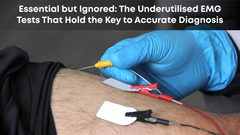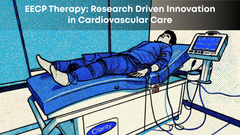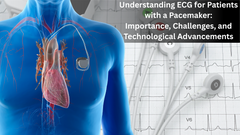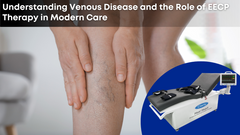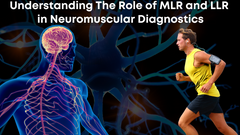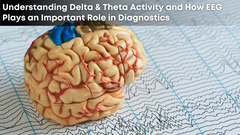Absence seizure – Affecting the growth of children and young adults
An absence seizure, also known as a petit mal seizure, affects consciousness and can cause a temporary loss of awareness. Absence seizures are most commonly seen in children and typically involve a brief staring spell that lasts just a few seconds.
The person experiencing the seizure may appear to be "zoned out" or staring off into space and may be unresponsive or unaware of their surroundings during the seizure. Unlike other types of seizures, absence seizures typically do not cause convulsions or jerking movements.
Although absence seizures are generally brief and do not cause lasting harm, they can be disruptive to a person's daily life, especially if they occur frequently or during activities such as driving or operating heavy machinery.
What causes Absence Seizures?
The exact cause of absence seizures is not fully understood, but they may be related to abnormal electrical activity in the brain. Some factors that may contribute to the development of absence seizures include:
- >Genetics: Absence seizures can be inherited, and some genetic mutations may increase the risk of developing them.
- >Structural abnormalities in the brain: Brain lesions, malformations, and other structural abnormalities can interfere with the brain's normal functioning and increase the risk of seizures.
- >Metabolic disorders: Certain metabolic disorders, such as hypoglycemia, can cause seizures.
- >Medications or substances: Some medications and substances, such as cocaine, can cause seizures.
- >Infections: Infections of the brain or central nervous system can increase the risk of seizures.
- >Trauma: Head injuries or other types of trauma can trigger seizures.
What are the symptoms of Absence Seizures?
Some common symptoms of absence seizures include:
- >Sudden and brief loss of consciousness: During an absence seizure, a person may stare blankly into space and appear to be "daydreaming" or "zoning out" for a few seconds to half a minute.
- >Lack of response: The person may not respond to external stimuli or questions during the seizure and may not remember the seizure afterwards.
- >Eye blinking or fluttering: Some people may experience rapid eye blinking or fluttering during an absence seizure.
- >Lip smacking or chewing: Some people may exhibit subtle movements such as lip smacking or chewing.
- >Slight body movements: There may be slight movements such as hand twitching, arm raising, or head nodding.
- >Post-seizure confusion: After the seizure, the person may be confused or disoriented for a short period.
Notably, absence seizures can be mistaken for other conditions, such as daydreaming or attention deficit disorder. Hence, it is crucial to seek medical attention if you notice these symptoms. A doctor may perform an EEG (electroencephalogram) to diagnose an absence seizure and prescribe medications to manage the condition.
How do Absence Seizures affect children? Do they impact their cognitive and overall growth?
Absence seizures can significantly impact children's daily life, as they can disrupt their cognitive and social development. Some potential effects of absence seizures on children's daily life include:
- >Cognitive development: Absence seizures can interfere with a child's ability to learn and concentrate, as they may miss important information during the seizures and may have difficulty focusing on tasks.
- >Social development: Children with absence seizures may have difficulty interacting with peers, as the seizures can be mistaken for daydreaming or inattention. This can lead to social isolation and difficulties with making friends.
- >School performance: Children with absence seizures may experience difficulties in school due to their cognitive and social difficulties, which may impact their grades and academic progress.
- >Emotional and behavioural issues: Children with absence seizures may experience emotional and behavioural issues such as anxiety, depression, and aggression.
- >Medication: Absence seizures are typically treated with valproic acid or ethosuximide. The frequency and dosage of medication will depend on the severity of the seizures and the child's response to treatment.
Diagnosing Absence Seizures
The diagnosis of absence seizures typically involves a comprehensive evaluation by a healthcare professional, which may include:
- >Medical history: The healthcare provider will ask about the child's medical history, including any previous seizures, medical conditions, or medications.
- >Physical exam: A physical exam to assess the child's overall health and rule out any underlying medical conditions contributing to the seizures.
- >EEG (electroencephalogram): An EEG is a non-invasive test that measures the electrical activity in the brain. During an EEG, small electrodes are placed on the child's scalp and connected to a computer. The test can help to identify abnormal patterns of brain activity that are characteristic of absence seizures.
- >Imaging studies: In some cases, imaging studies such as an MRI or CT scan rule out structural abnormalities in the brain contributing to seizures.
- >Video monitoring: In some cases, the child may need in-hospital video monitoring, which involves recording the child's seizures on video and monitoring brain activity with an EEG. This can help to confirm the diagnosis of absence seizures and provide more detailed information about the frequency and duration of the seizures.
Once the healthcare worker diagnoses the child with absence seizures, they may prescribe medications to help manage them. Ongoing monitoring and follow-up with the healthcare provider are essential to ensure that the child receives appropriate treatment and that any potential side effects are addressed promptly.
Preventing Absence Seizures
There is no surefire way to prevent absence seizures, as their cause is often not fully understood. However, some strategies can help reduce the likelihood or frequency of seizures and help manage the condition:
- >Medication: In many cases, you can effectively manage absence seizures with antiepileptic medications, such as valproic acid or ethosuximide. These medications can help reduce the frequency and severity of seizures.
- >Avoid triggers: Some people with absence seizures may have specific triggers that can cause seizures, such as sleep deprivation or flashing lights. Avoiding these triggers, when possible, can help reduce the likelihood of seizures.
- >Good sleep hygiene: Ensuring the child gets enough sleep and maintains a regular sleep schedule can help reduce the likelihood of seizures. It is crucial to encourage good sleep hygiene by establishing a regular bedtime routine, limiting screen time before bed, and ensuring a comfortable sleep environment.
- >Stress management: Stress and anxiety can sometimes trigger seizures in people with absence seizures. Helping the child manage stress through relaxation techniques, such as deep breathing or yoga, can help reduce the likelihood of seizures.
- >Regular medical check-ups: It is important to have regular check-ups with the child's healthcare provider to ensure their medication dosage is appropriate and monitor their progress over time. The healthcare provider may recommend changes in medication or treatment based on the child's progress.
It is essential to work closely with the child's healthcare provider to develop an individualized treatment plan and appropriate management strategies for the child's needs. Most children with absence seizures can lead healthy, fulfilling lives with appropriate treatment and support.
How can Clarity Medical's EEG devices help?
With up to 32-channel EEG recording capabilities, Clarity Medical's world-class EEG systems are ready to supplement your neurodiagnostic needs. Engineered for high accuracy in pediatric as well as critical care situations, these EEG systems use noise reduction to eliminate motion artefacts such as blinking and patient movement. Additionally, they also allow neurologists to add events and comments with a highly user-friendly toolbar.
Final Thoughts
Diagnosis is the first step towards lasting relief and a cure. Clarity Medical is committed to improving diagnostic tools for the medical industry so doctors can help patients feel better fast! EEG devices and other diagnostic tools from Clarity Medical help healthcare professionals to find the causal factor for abnormal brain activity, paving the way for better healthcare and patient management.






